There should always be some celebration with the release of a brand-new vehicle because with it will come new technology, greater refinement and better efficiencies and the new 2021 Isuzu D-MAX delivers on all of that. It is a vehicle that will shake the establishment and likely catapult it for the first time, as a serious contender for best-ute-in-Australia status. It’s not perfect, but it is pretty obvious that Isuzu has listened and responded. Here are some of the reasons why.
1. The Suspension
I’ve been a critic of the previous generation D-MAX’s suspension system because it was barely adequate in a sea of utes with barely adequate suspension. For decades new owners have been saddled with the expense of taking brand new vehicles down to the local suspension shop and changing the whole lot, struts, leaves and shocks for something that actually works; can carry a load, doesn’t crash to the bump stops on a speed hump, can cope with corrugations and without fade, in the quest of having a vehicle that delivers on its promise of doing what 4X4 utes are supposed to do.
Make no mistake the stock suspension in new D-MAX is so many times better than what’s come before it it’s not funny. The difference is like chalk and cheese! In my short time with the vehicle, I noticed the test LS-U’s three-leaf rear end and IFS strut front was no longer the floaty blancmange (that’s a wobbly jelly dessert) of before on the highway but something that was settled and composed.
Up front, the axle weight has been increased to 1,450kgs, but the big news is the redesign of the upper and lower control arms, the upper mounted higher than in the past. This allows the engineers greater flexibility in countering body roll via camber and counteracts the tendency of a tyre to roll onto its outer shoulder in a corner. The more upright the stance of the tyre as the body rolls from its static position, the more tyre face remains in contact with the road and gifting greater poise. Isuzu seemed to have nailed it.
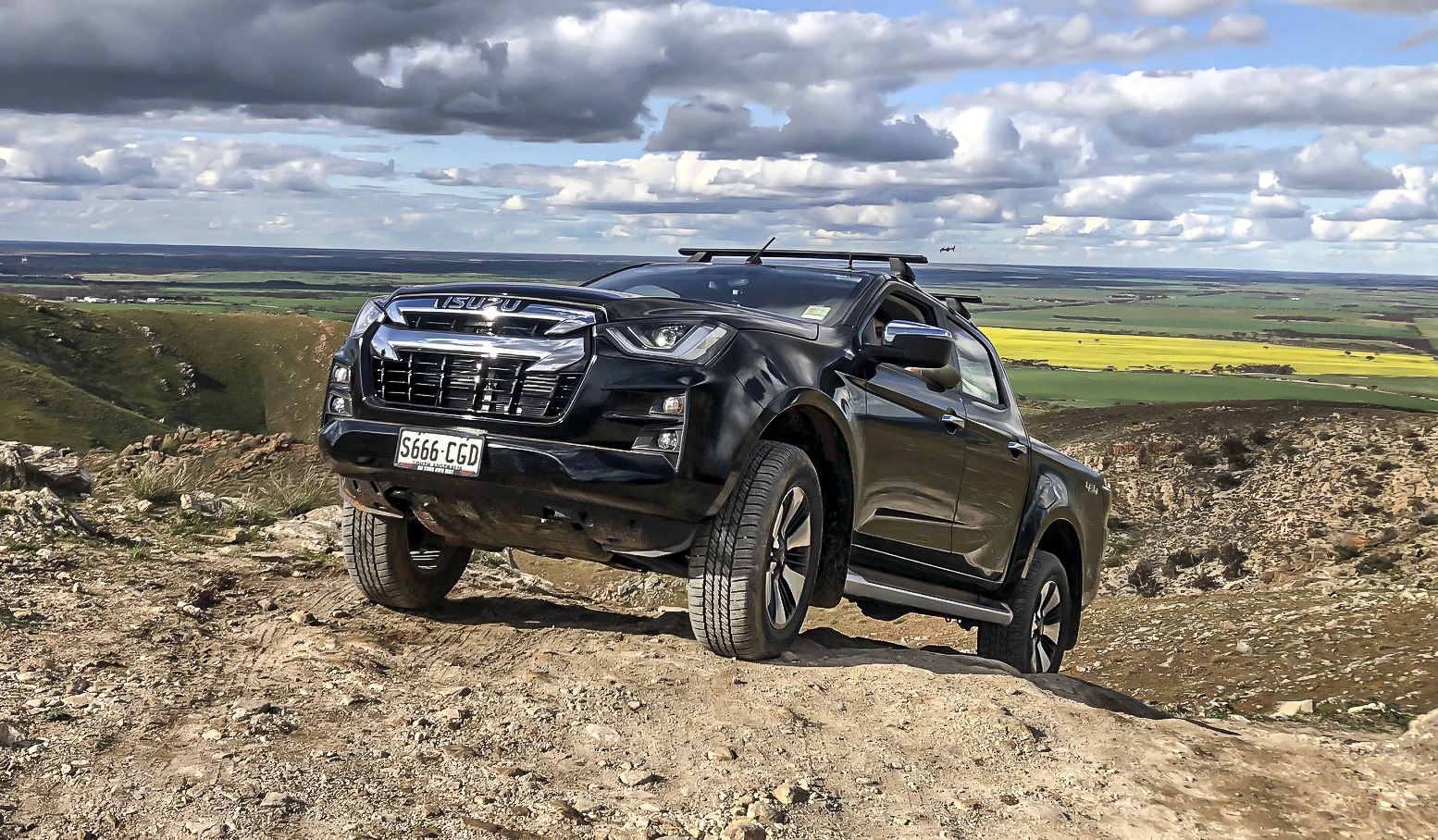
Turning into corners hard wasn’t beset with understeer (although pushed hard it will happen – it’s a ute thing), it steered like a champ and further aided by a new 34mm thick anti-roll bar that is 5mm thicker than before. It’s a whole lot firmer in the front now and that’s a good thing on-road, I wonder whether we could agitate for a disconnecting function for when going off-road for more flex from the front?
Mid-corner bumps were a lot less unsettling than before. I always engage high range 4WD on the dirt to prevent the back end from skipping out on a bend or when clobbering the corrugations and it works. Now it seems the 2021 D-MAX will knock most of that on the head in 2WD (I’d encourage you to continue using high range 4WD on the dirt).
That new poise is likely a combination of the front-end trickery and some weight saving in the rear leaf springs claimed to range between 1.5 to nearly 6kgs per side (depending on model) and thus reducing unsprung mass. The heavier the wheel/hub/spring-mass is the more work the suspension had got to do in lifting all that up and down as the bumps emerge, less mass, less bump. Isuzu also claims the rear shocks are 7˚closer to perpendicular which will help dissipate the energy they have to absorb and with an extra 30mm of travel its happy days in keeping those back wheels on the ground when you are getting your flex on.
I only wish we could have put a modest load in the back because I reckon this time around there’ll be less height deflection from too-soft a spring rate.
That should please the caravan set who in the past haven’t wanted to spend the money on changing the under-gubbins, instead pfaffing around with airbags and weight-distribution hitches that have a habit of breaking chassis on corrugations and big bumps. The new one will do a much better job and straight out of the box. There’ll still be customers lining up to do their GVM upgrades because it’s their want to carry dangerously heavy loads, but at least this time those who stay stock will have a better chance at highway survival.
All of this new capacity is a bit like the steak-knife offer, the gift that keeps on giving. New D-MAX is a much comfier cabin space to be in thanks to a ride that is more car-like than its predecessor, yet not softened up to buggery to achieve it and then compromising all the other chores the vehicle has to do. I can safely say the 2021 D-MAX is suspended in a way that usually OEM leaf springs and front struts can’t do. That makes me happy.
2. Electric Power Steering (EPS)
EPS uses an electric motor rather than a hydraulic pump to turn corners now and offers the double benefit of being speed-sensitive (increasing the load at higher speeds and lightening the load when slow) and enhancing fuel-efficiency.
Some of you might not be happy with one of the safety-Nanny’s called Lane Keep Assist. When you stray into someone else’s lane-space you’ll get a tiny tug from the wheel, a gentle reminder that you need to concentrate and I reckon it’s a good thing (just takes a little getting used to). Don’t let it put you off, as the steering, both on and off-road is now a breeze. I can’t wait to see what effect it will have in lightening the load when in the sand on a set of A/Ts or mud with M/Ts, because in our limited time off-road in the rocks it was easy and instantly responsive. Nice touch.

3. The Safety Electronics
They are a necessary evil, mandated for inclusion in all new vehicles and without them, you won’t get a good ANCAP rating, so they’re essential to sales and proving the crash-worthiness of the vehicle. New D-MAX is bristling with new-tech and is again such a departure from the previous model which was basic at best and lagged way-behind other makers. A lot of people liked that simplicity but all good things one day must come to an end.
You have to remember that Isuzu produces only one line of vehicles, a ute and a wagon that use the same underpinnings. With no other platform in their range to share R&D costs with it’s an expensive exercise to amortise the engineering across just the D-MAX and MU-X. That’s why the partnership with Mazda is important for this 2021 model as it was for the 2012 model before it with General Motors. The difference now is that the new partners are using 2021 technologies that are state-of-the-art instead of technologies that were on the verge of being out-of-date back in 2012 because the benchmark has been set much, much higher.
ABS has been around a long time and it is a proven braking technology. I swear by it and on all road surfaces. It underpins the basic tenets of Traction Control and Stability Control and makes modern vehicles safe, but new D-MAX has finally played catch-up and pointed a nose in front of the competition which is how it should be with the release of a new vehicle. To deliver all this new tech Isuzu have bundled up a package called IDAS or Intelligent Driver Assistance System that hooks up a 3D stereo camera to the brakes and is on the constant lookout for trouble. It has got me wondering with these fancy windscreens with their cameras what is going to happen when inevitably you break one? Hope the glass and camera are separate entities.
We’ll talk at length about the new safety in 2021 D-MAX soon when we do the first of our longer-term tests but in the meantime, I can confirm that on both bitumen and on dirt, new D-MAX passed the ‘Wombat Test’ we do here at Loaded 4X4, with flying colours. Chucking it sideways on bitumen and later on dirt at 80km/h, told me that that new suspension tune coupled to quicker computations by the stability widgets meant that there was no way I was going to end up in the scrub and on my roof. I’m not saying it’s impossible, because the Laws of Physics can always rear their ugly heads given enough prodding, but this car is definitely safer and better than more than a few others that I’ve driven of late that aren’t wombat-friendly!
4. It’ll Go Off-Road
The outgoing model wasn’t very good off-road in standard trim, a combination of lousy brake-traction control, open differentials and no rear diff-lock. At full or near-full suspension stretch it would cock a wheel in the air and send all the drive out the spinning wheel. Game over. If you tried to entice the traction control system into action you needed 2,500rpm on the clock and that would give you too little, too late and with an increased risk of breaking important components like CVs (constant velocity joints) seen on the front driveshafts.
Isuzu confirmed with us that the CVs are completely new for the 2021 model and much more robust, offering better articulation and strength (around 8% larger than the previous versions). That will go a long way to defeating that type of failure.
The previous model fell-foul of only having one traction control state-of-tune. It was designed for 2WD or high-range 4WD at higher “road” speeds. In low range 4WD at crawler speeds when it was really needed, the engine speed was restored, but the brakes would only come on with heaps of revs, the opposite of what’s required. If you are keen about your rock-hopping you know how important it is that at the first hint of wheel slip the brakes are applied and that restores momentum.
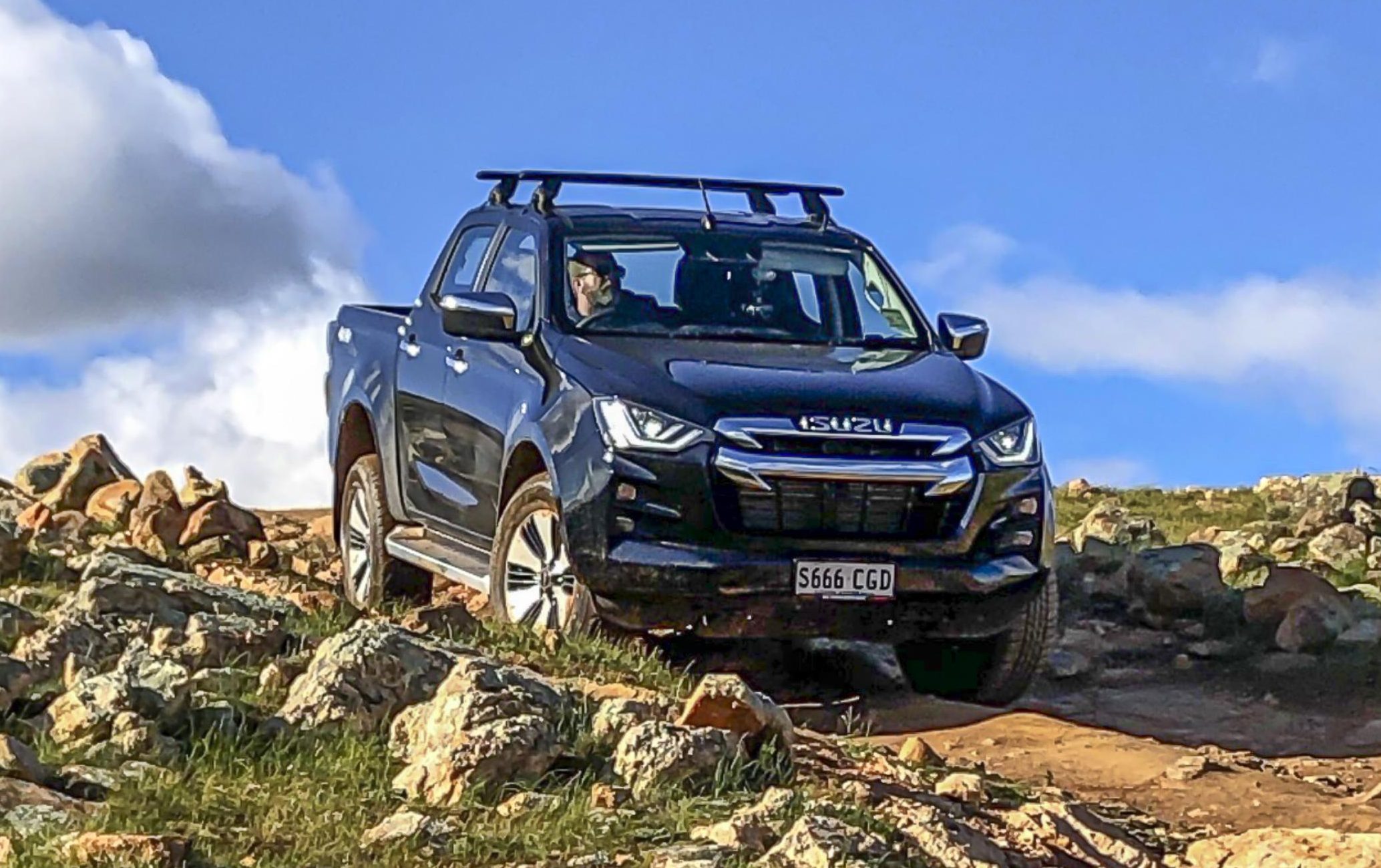
I can think of plenty of times on the bitumen when it’s wet when Isuzu’s earlier form of traction control can/will/did save your bacon, but I also want it to be able to discern when I’m off-road and in low range at slow speeds and that previously it couldn’t do.
The new one makes amends and will make a novice four-wheel-driver look like a champ with a revision in the engine speed algorithm. Now, 2021 D-MAX’s traction control kicks in around 1,200-1,400rpm, around half the engine speed of before and that is on the way to being perfect.
I need more time in the vehicle to draw an accurate assessment as to its true new rpm threshold, but it is seriously close to being amongst the best in the Japanese dual-cab business (compared to Triton and Hilux). My recent test was on wet clay and hard to judge the precise moment of brake application. I really needed a rocky diagonal gully to get crossed-up, but I know it’s a trillion times better than before.
The other ace up its sleeve is a rear axle diff-lock fitted standard!
This has been a serious omission in the earlier D-MAX’s off-road arsenal as it would have combatted the ineffective traction control and the open diffs and likely reduced driveline breakages reported in the forums.
The 2021 D-MAX has an electro-magnetic rear cross-axle diff-lock and activated by a switch positioned sensibly by the gear selector along with the hill descent button and the stability control button. When activated there’s a dash display that confirms its engagement, all it requires is some modest wheel rotation in advance of the obstacle; recognise the track imperfections whilst you’re in low range, hit the button and hook-up, deal with the obstacle and hit the button once more for release. It appeared reliable and relatively foolproof in operation and it makes such a big difference. In my 2014 D-MAX I dropped an ARB Air-Locker into the rear diff and it transformed the vehicle’s ability. In 2021 it’s there as a warrantable OEM fitment. That’s good!
When engaged on new D-MAX though it disables traction control which I felt should have been left to the driver to override if need be. That’s bad.
There will be times when you want the benefit of a finely tuned traction system to brake an errant front wheel when it tries to spin in addition to the backs being locked up. That gives the driver the best chance of getting up and over the first time. If the surface doesn’t have enough grip and traction is lost on now two spinning rear wheels, the fronts could contribute something to the exercise. That was my problem on the clay during the brief test I had with the vehicle.
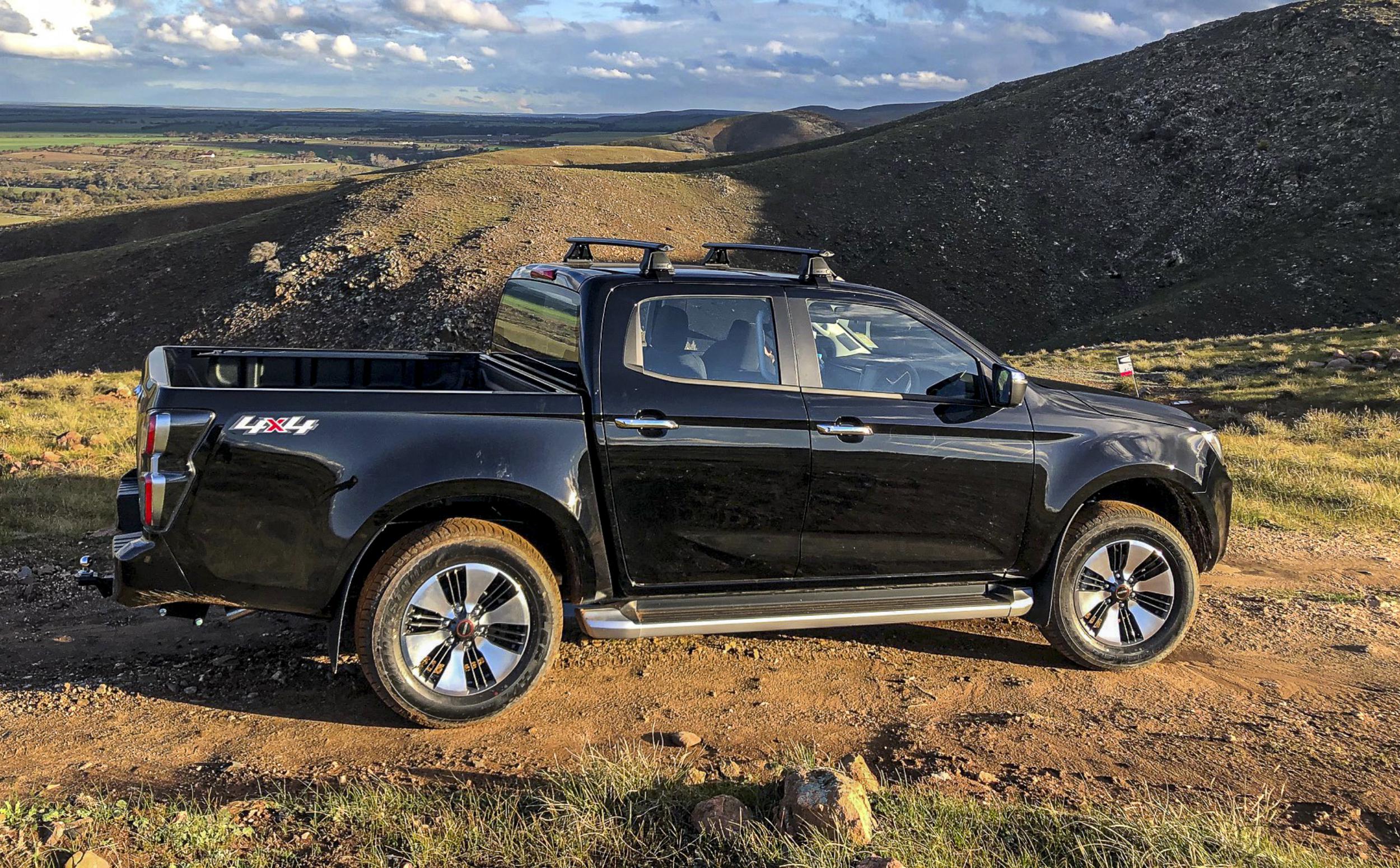
By being able to depress the stability/traction control button at the critical moment or just before, would then allow you to deploy all of the off-road kit and likely get you a better result. It would be a cinch to incorporate this function and I’ll be lobbying for its inclusion whenever the first mid-model update comes along.
Oh and apart from the previously mentioned suspension changes which permit more articulation, there’s more clearance too at 240mm. The sidesteps on our press vehicle didn’t touch down once on our test route whereas the previous generation D-MAXs that were accompanying us were regularly crunching out on ramp-over.
You’ll also be pleased to learn that Isuzu hasn’t fiddled with the gearing in low range. It is still commendably deep (2.482:1) and pointed down a steep hill in first gear in automatic form it wasn’t running away. You can augment those descents with Hill Descent Control, nothing new there, but it will dampen your descending speed via the brakes (and at a variable speed you can select) to supplement the gearbox if the hill requires some extra finesse. That will also help when you inevitably change the wheel/tyre package to something taller and you upset the gearing ever-so-slightly in the wrong direction.
For those of you who like to splash around, you’ll be pleased to learn that the front and rear diffs have retained a breather tube(s) and are now routed higher up into the chassis with a claimed fording depth of 800mm.
You might want to check the forward-facing snout of the air intake as it could be a funnel for unwanted droplets driven hard enough through a puddle. There is a snorkel in the accessories line, but Isuzu says that there is a complex path that those droplets would have to take to do any damage, so provided you don’t go in too deep you may be okay. Additionally, the airbox has been pre-plumbed for snorkel installation.
Because it’s got bigger brakes it’s lost the option of a 16” wheel, so 17” is seen on the SX and LS-M, whilst the LS-U and X-Terrain cop an 18” fitment. Lucky there’s plenty of light-truck choices in 17” so there’s likely an LT265/65R17 or LT265/70R17 waiting in the wings to replace the passenger car H/Ts and be perfectly legal and infinitely more durable.
5. Apple CarPlay and Android Auto
Previous D-MAX owners will tell you their frustration with the earlier connectivity of the sound system and the slowness of the GPS and its reliability was sometimes in doubt. Well doubt no more because there’s something to cheer about with the addition of Apple CarPlay and Android Auto. I can report that I was able to connect my phone in an instant and use Google Maps for directions and listen to my podcasts without a fumble. The interface is big, the screen is as big as a football field and my old eyes appreciated quick recognition of the key-points on the maps and critical entertainment info. I know I barely scratched the surface of its abilities and functions so I’ll look forward to getting my bum on the seat for an extended review later. Looking forward to DAB as well!
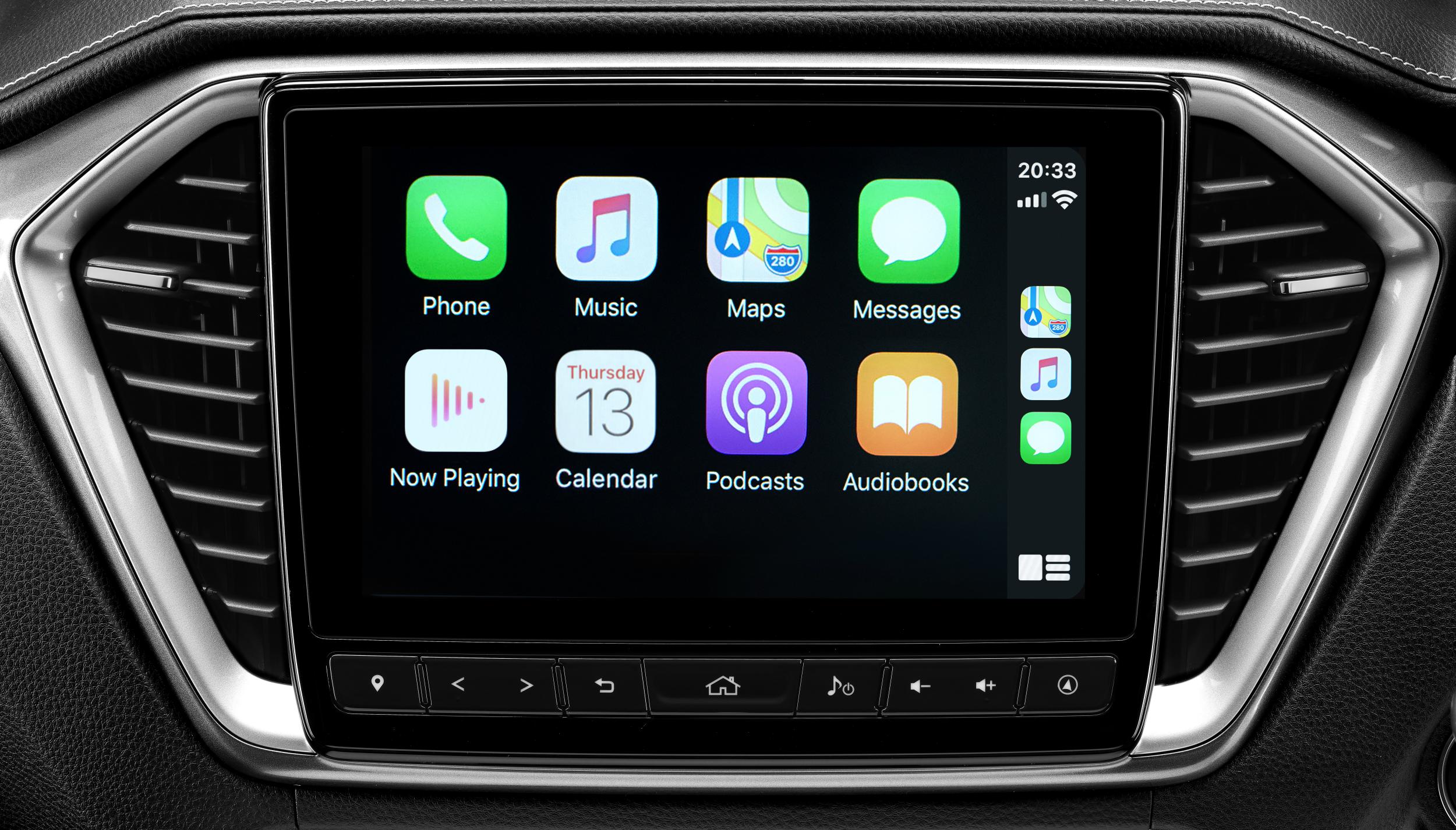
6. Climate Control
This one pleased Mrs Wilson immensely as new D-MAX features his and her settings, yep, individual temperature control and that will guarantee far fewer matrimonial bust-ups!
7. Comfy Seats Front and Rear
I loved the new racy looking and figure-hugging front seats, loaded with plenty of adjustability. Whilst they cossetted my skinny-arse I don’t know how you’ll get on if your butt is on the rotund size. I couldn’t find anyone for comment at the time but I reckon Isuzu’s engineers would have been looking for an eighty-percentile or better target to accommodate the widest range of buttocks possible, so it is probably okay.
I also appreciated the new fabrics (yes Steane, they do offer leather too) as they felt a better quality than that before and the pattern and colour suited the interior which also incorporates a centre console lid that’s padded! No-more sore-elbow!
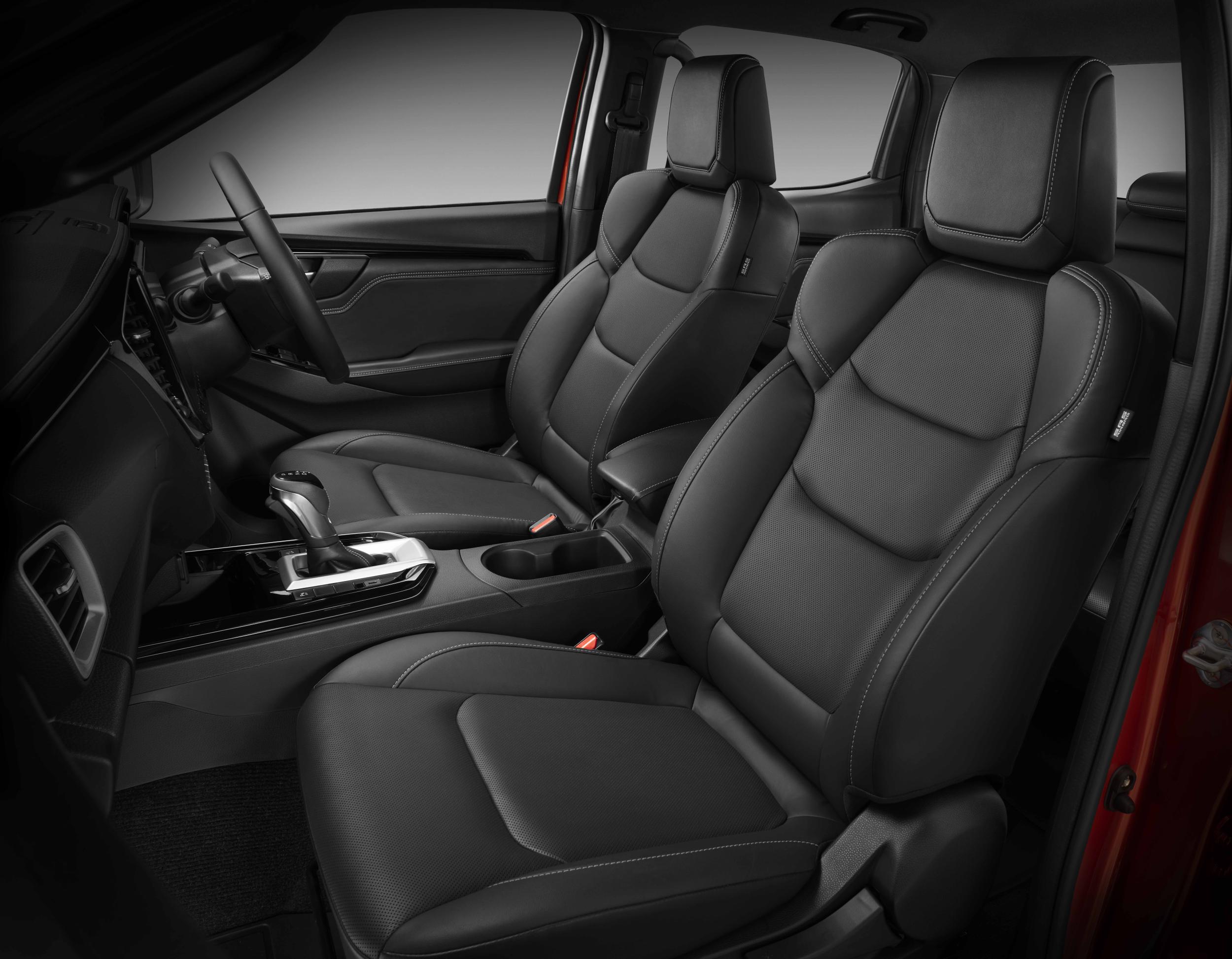
8. A Steering Wheel That Really Adjusts
In addition to the typical tilt ability is now one for reach with a telescopic function.
With my old truck, I’ve had a couple of occasions on longer trips where I haven’t been able to quite get my shoulder ratio to arm-length and steering wheel right… now I can.
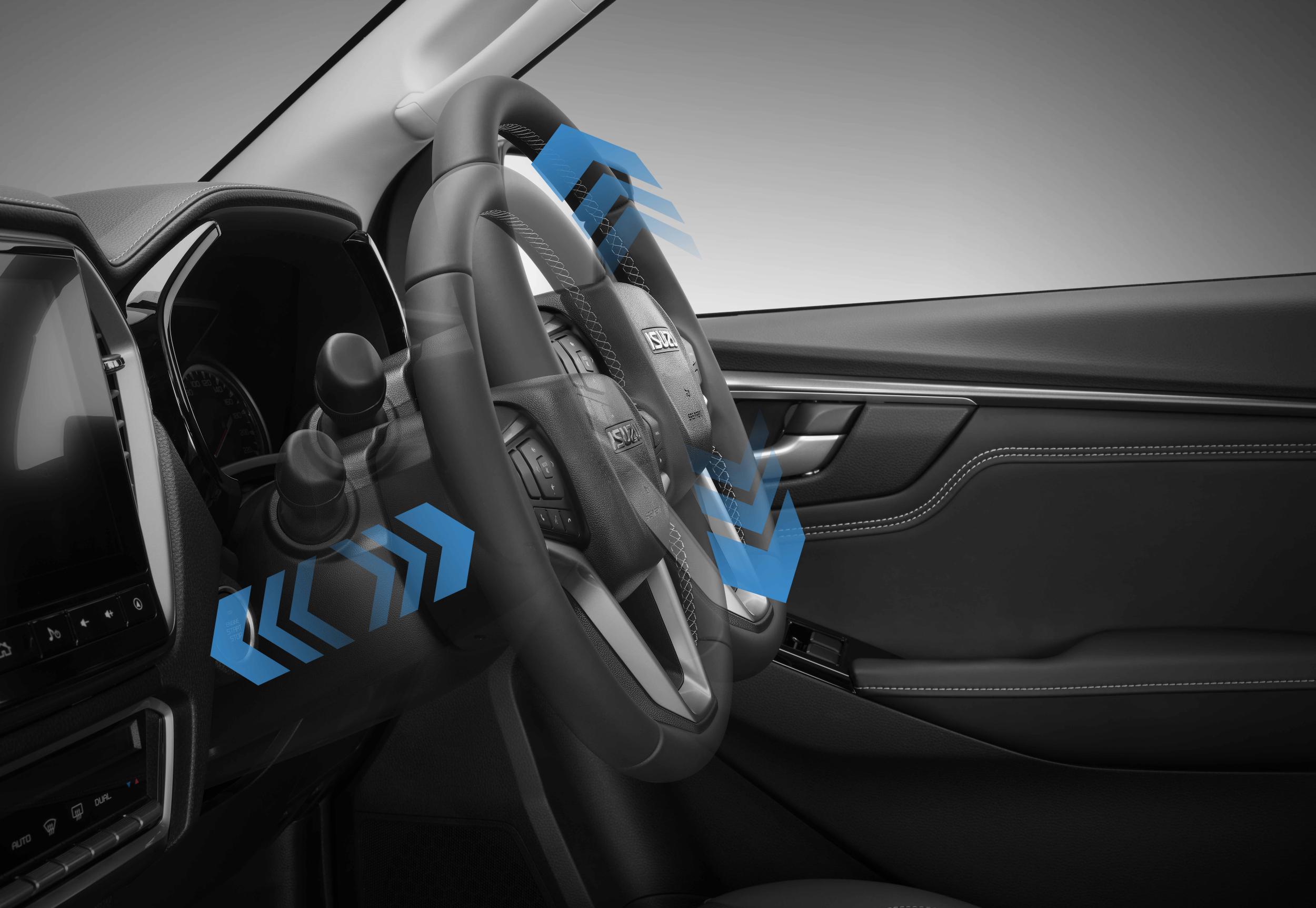
9. A Transmission That Doesn’t Hunt
Whilst the number of speeds hasn’t changed (six speeds in manual or automatic form) the way they shift has.
The previous model offered in automatic form a gearchange that ran up and down the gears on the slightest gradient like a yo-yo. It wasn’t pleasant and Isuzu wasn’t alone, because the transmission was shared with Toyota on Hilux, Fortuner and Prado. Luckily there was a dealer-supplied software change in 2018 that smoothed most of that behaviour out and held D-MAX gears longer and luckily in the 2021 model, this new auto is even more refined.
It doesn’t have paddles, which is a shame, but the “Sports-Shift” function is still extremely useful and easy to access. Logical too; push it forward to go up a gear, pull back to go down one. I say that because on the Ranger it’s arse-about and every time I jump in one it takes an hour or so of recalibration in my old scone to get the shifts right.
10. The 4JJ3
So, Isuzu kept the old jigger, the 4JJ1 receiving a makeover to keep it serving the faithful and now called 4JJ3.
The pistons and the shape of the crown, injectors and cam gear all received some tweaks and they work because it is MUCH QUIETER than before. It can still get a little raucous at higher revs but overall this is such a more aurally pleasant vehicle to drive. It’s a bit like stepping from an old TF series DI Rodeo into a BMW X5… if you close your eyes and think of the prize you might almost hear it!
Speaking of cam gears and valves and things like that it retains a proper timing chain and not a silly rubber belt. You can hear the cheers from mechanics around the nation, further reinforcing the reputation Isuzu has for engine longevity and being truck-tough.
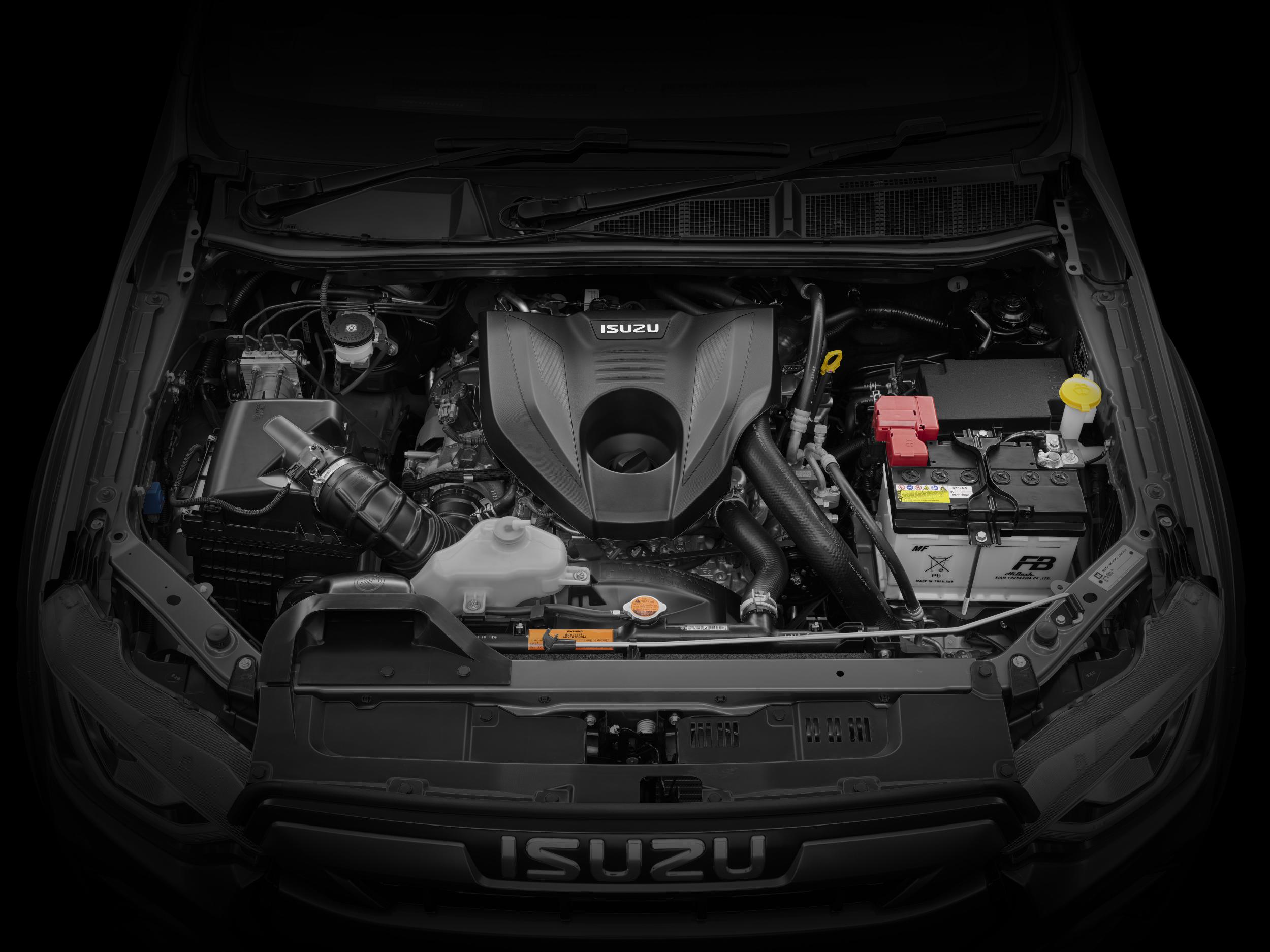
It has also been tweaked for more gee-gees, 450Nm now. I would have liked more and I believe this category should have a bare minimum of 500Nm, but I’ll take it as it’s much more-sprightly off the mark. The advantage has been partially lost because the vehicle is a little bit heavier (now 3,100kgs GVM/ 2,030kgs kerb), but it’s definitely an improvement and on a couple of steep Adelaide hills it pulled like a train, meaning someone’s paid some attention to getting the gearing right.
Fuel-efficiency seems to be still very good, can’t quote you actual numbers but the mix of highway, city and rocky low range we did suggested it’s still in the vicinity of the old one, maybe even slightly better.
11. I Can’t Count
D-MAX has always been a value proposition and that looks to be the same with the 2021 model. I’ve already had a few conversations with existing owners who’ve been miffed at the price hike but you’ve got to smell the roses because the new model is better everywhere than the last and all that safety kit costs dollars.
It’s not until you stack it up against similarly specced competitors that you realise how we’ve been played for mugs for years. At the top of the tree a new Ranger Wildtrak in 2.0L guise will cost you around $65K plus on-roads, a Hilux Rogue $62K plus on-roads (the revised 2021 model’s prices are yet to be revealed) and then the D-MAX X-Terrain has introductory driveaway pricing (that’s on-roads included) at just $58,990 which has got to be the bargain of the century. When the promotion is finished it’ll revert to $63K plus on-roads so you better get your order in pronto.
There’s a six year/150,000kms warranty along with seven years roadside assistance and seven years capped price servicing. Thanks to a couple of sensible service-point rectifications, Isuzu claims a 12% reduction in costs across the servicing period.
Summary
Make no mistake, this is a significant vehicle for Isuzu. It seems it’s an important vehicle for Toyota and Ford as well, as both of them have in the last couple of weeks announced revisions to their Hilux and Ranger fleets in anticipation of D-MAX’s release and aimed no doubt at keeping the faithful, faithful.
For some, it will be still too conservative in its approach, but that’s the Isuzu steady-as-she-goes way. That steady hand in the past has provided a ute that has a legion of fans rusted onto its simplicity and reliability. The new features are going to attract a wealth of new buyers who previously wanted more… now they can get it.





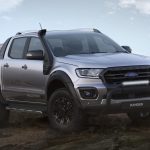
GIPHY App Key not set. Please check settings